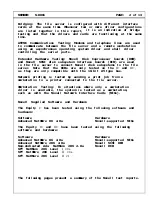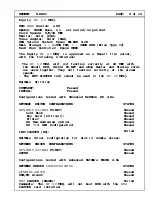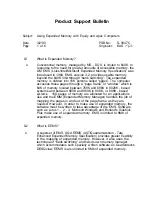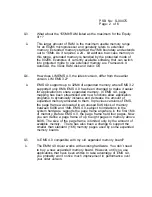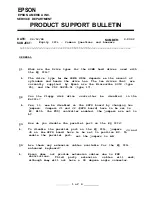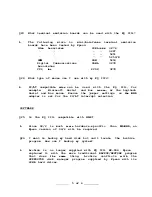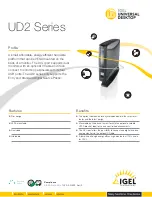
PSB No: S-0047C
Page: 2 of 6
Q3.
What about the 155Mb RAM listed as the maximum for the Equity
III +?
A.
This larger amount of RAM is the maximum usable memory range
for an 80286 microprocessor and generally refers to extended
memory. Extended memory starts at the 1Mb boundary and extends
out to 16Mb. As it requires a 24 - bit address to access memory in
this range, extended memory is handled by the protected mode of
the 80286. Examples of currently available software that can switch
into protected mode to use extended memory are Framework II,
AutoCAD, the VDisk RAM disk and Xenix OS.
Q4.
How does LIM EMS 4.0, the latest version, differ from the earlier
version, LIM EMS 3.2?
A.
EMS 4.0 supports up to 32Mb of expanded memory where EMS 3.2
supported only 8Mb. EMS 4.0 has been changed to make it easier
for applications to share expanded memory. In EMS 4.0, page
mapping has been streamlined and new functions allow application
programs to dynamically increase and decrease the amount of
expanded memory allocated to them. In previous versions of EMS,
the page frame was located in an unused 64K block of memory
between 640K and 1Mb. EMS 4.0, subject to limitations in the
system hardware, supports the page frame anywhere in the first 1Mb
of memory. Before EMS 4.0, the page frame held four pages. Now
you can define a page frame of up to eight pages in memory above
640K. The size of the page frame is limited only by the amount of
available memory.
There has also been a change to support the
smaller than standard (16K) memory pages used by some expanded
memory boards.
Q5.
Is EMS 4.0 compatible with my old expanded memory board?
A.
The EMM 4.0 driver works with existing hardware. You don’t need
to buy a new expanded memory board. However, until you use
applications that have been written to take advantage of EMS 4.0,
you probably won’t notice much improvement in performance over
your older version.
Summary of Contents for Equity III
Page 58: ...Page 2 of 2 ...
Page 67: ...N C J 5 r J Page 7 of 17 ...
Page 69: ... Page 9 of 17 ...
Page 75: ...1 3 4 Difference between 10MHz version and 12MHz version ...

